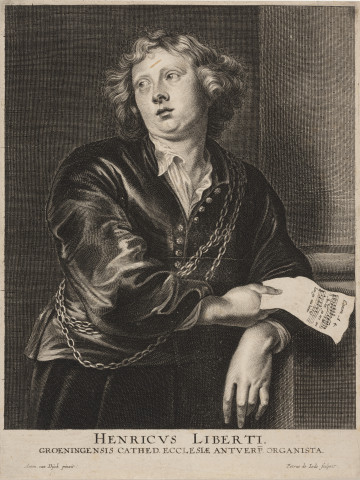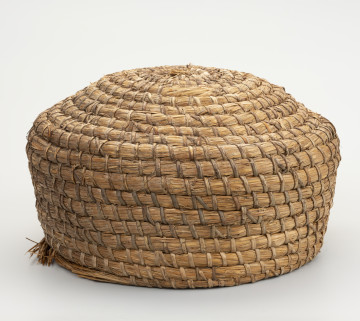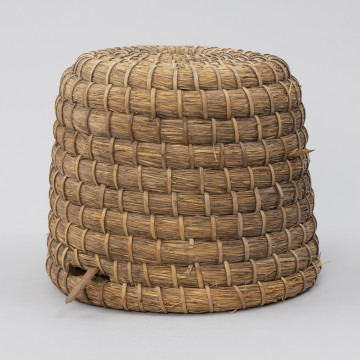
Portrait
circa 1632
National Museum in Szczecin
Part of the collection: Artistic glass
A glass cover with a tall pinnacle, formerly in a set with an unknown item. This element owes its exceptional appearance mainly to the material it is made of, i.e. black, non-transparent glass called hyalith. It received its name, inspired by the Greek word for “glass” (“hyalos”), from the very inventor of this 19th-century technical novelty. Georg Franz August Longueval, count of Buquoy (1781–1851), was a mathematician, a physicist, a chemist, a philosopher as well as an owner of several glass factories. His broad interests and experiments led him to discover a new recipe for molten glass that has the characteristically deep black colour. Its production started in 1817. Owing to the unique hue, products made of hyalith, such as cups, vials, vases, tea containers or candle-holders, quickly became fashionable and widely in-demand. The popularity of hyalith, however, lasted for a relatively short period, i.e. until the 1840s, giving place to other types of glassware (mainly mass tinted glass of various colours), though hyalith vessels could still be found in the market.
These items often displayed gilded decorations which looked very impressive on the shiny black surface. This type of decoration can be found on the cover from Wilanów, consisting of geometrical patterns such as triangles and a mesh with crosses in the spots where lines intersect. Such embellishments are typical of numerous 19th-century items made of hyalith.
Author / creator
Dimensions
entire object: height: 12,7 cm, width: 12,2 cm
Technique
gilding,manual forming
Owner
Museum of King Jan III's Palace at Wilanów
Identification number
Location / status

circa 1632
National Museum in Szczecin

1965
National Museum in Szczecin

1890 — 1910
National Museum in Szczecin
DISCOVER this TOPIC
Museum of King Jan III's Palace at Wilanów
DISCOVER this PATH
Educational path